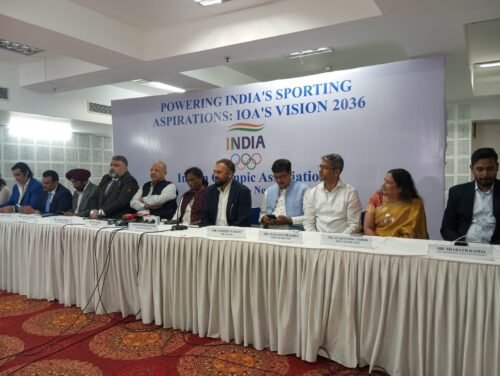Should India’s top cyclists, based at the IG Stadium here, continue to train on Delhi unsafe roads and in its hazardous winter air? Esow recent accident raises serious concerns about the safety and suitability of outdoor training in Delhi

Early Wednesday morning, one of India’s top cyclists, Esow Alben, was involved in a serious accident during a routine road training session. While riding near Akshardham temple in East Delhi, Esow was hit from behind by a speeding motorcycle. The impact flung him off his bike and onto the road, completely damaging his high-end cycle. The 24-year-old fortunately escaped without major injuries, but the incident underscores the risks India’s cycling team faces while training on Delhi’s unsafe roads.
Esow has been advised a week of bed rest, putting his participation in an upcoming Grand Prix event in Germany in doubt.
“The accident hurt my glutes, hips, and arms. I’ve been told to rest. I’m having trouble walking,” Esow told SportsBackstory.com. “I know how to ride on roads. These guys came rushing on a bike — I don’t know what their intention was. They hit my back wheel, and I flew off and fell on the ground. Some people helped me, but the riders blamed me instead of apologizing. They were rude and ran off when I called the police and started recording.”
Esow had fallen slightly behind the training group and was attempting to catch up. After crossing Akshardham temple and just before taking a flyover, he was struck by the motorcycle. Coach Rahul Kumar and support staff quickly responded and took him to a hospital. His custom racing bicycle, including a recently installed wheel worth ₹70,000 paid from his own pocket, was completely damaged. “These are expensive carbon-fibre bikes. The racing wheel alone cost ₹70,000, and the bike itself is worth around ₹5 lakh. Unlike cars or motorcycles, our cycles aren’t covered by insurance,” Esow explained.
One of India’s best talents, Esow has earned four medals at the Junior World Championships and won a team sprint bronze at the 2022 Asian Championships. Since 2015, he has been training in Delhi, home to India’s only indoor velodrome at the Indira Gandhi (IG) Stadium — a SAI National Centre of Excellence (NCOE). Despite the world-class indoor facility, road training is still essential for the sprint team. Twice a week, India’s top cyclists leave the IG Stadium at 4:30 a.m. for endurance rides, either toward Pari Chowk in Ghaziabad or around India Gate. The group of 16 NCOE trainees is accompanied by coaches, technicians, and safety cars.
“We start early — around 4:30 or 5:00 a.m. — to avoid heavy traffic,” said cycling team coach Rahul Kumar. “We have safety cars and follow a group formation. On Wednesday, Esow was running a bit late and had fallen behind the group. It was a terrible accident. We’ve lodged an FIR and want the authorities to take note, so this doesn’t happen again,” he said.
The accident draws attention to a broader issue — the poor safety record of Delhi’s roads. According to the Delhi Police’s “Road Crash Fatalities Report 2023”, there were 1,257 road accident fatalities in 2022–2023, with pedestrians accounting for 43% of the deaths.
“People in Delhi just don’t respect cyclists or pedestrians,” Esow said. “Many don’t follow traffic rules or maintain distance while overtaking. A cyclist riding for fitness or training will always keep a straight line — we know the rules.”

Esow’s experiences of training in Europe are very different. “I’ve trained in Germany and other parts of Europe. Drivers there follow traffic laws and stop for cyclists. Even when overtaking, they maintain a minimum 1.5-metre distance. Here, even with coaches, safety cars, and a group ride, we sometimes feel unsafe. But I guess that’s the reality in many Indian cities.”
This incident brings renewed urgency to calls for relocating cyclist training from Delhi to a safer location with less traffic and cleaner air. Currently, India has no other indoor velodrome, but sports authorities must begin considering alternative facilities. The accident also highlights the pressing need for public awareness around traffic rules and for stronger enforcement by the police.



